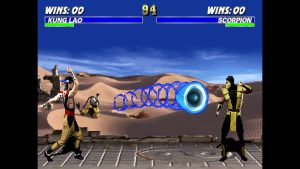
EA Sports College Football 25 marks the return of the NCAA franchise after 11 years of absence. The 2021 NCAA vs. Alston Supreme Court ruling allowed EA to finally compensate players’ likenesses, thus reviving the beloved college football game series. With this return comes a ton of overhauled systems and new features. We’ve outlined the biggest changes between the last game in the series, NCAA Football 14, and the latest entry releasing on July 19th for PS5 and Xbox Series S/X. Here are the biggest differences between NCAA Football 14 and EA Sports College Football 25.
They Use Completely Different Engines
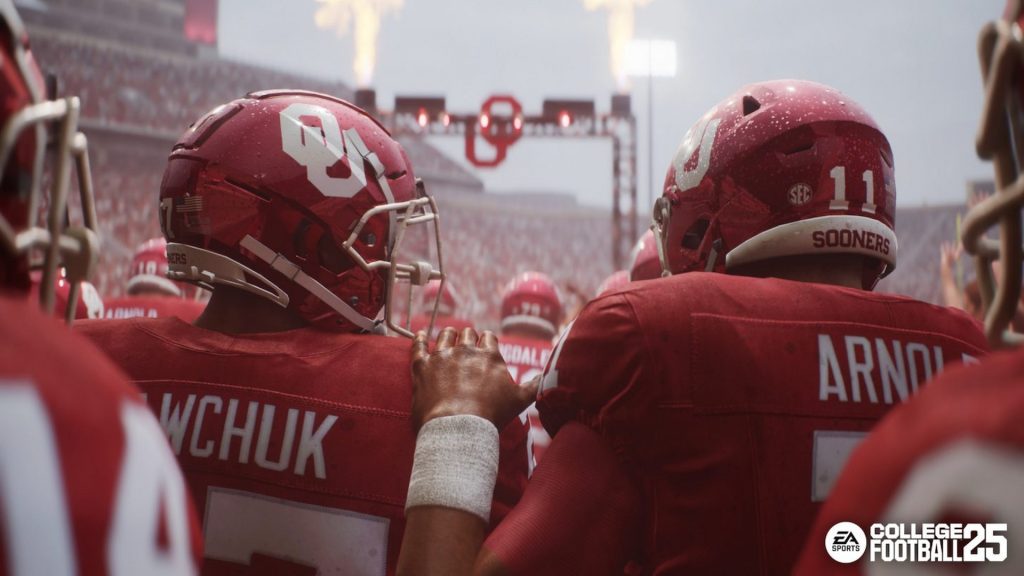
It’s been 11 years and two console cycles since the last NCAA game, so EA naturally had to create the latest one from the ground up. As such, EA Sports College Football 25 uses the latest iteration of Frostbite, which is quite the contrast from the Infinity 2 engine used in NCAA Football 14. EA’s proprietary Infinity Engine, not to be confused with BioWare’s Infinity Engine, was known for its physics usage and AI. The transition to Frostbite allows EA to recreate all 134 Division 1 team stadiums using a dynamic lighting system called ‘GIBS’ (Global Illumination Based on Surfels). GIBS was just one of the tools that helped make the exhaustive process of creating 134 authentic stadiums possible.
Player Likenesses Are Used for the First Time
Due to complex licensing agreements, past NCAA games lacked real player likenesses in-game, only using names of real players and generic faces. Well, due to the 2021 Supreme Court case allowing player compensation, the NCAA finally let player likenesses be used in games as long as the athletes themselves agreed to it. There are over 12,000 player likenesses in EA Sports College Football 25, with the rejected offers being represented by auto-generated characters. What’s interesting is that we can’t create the athletes who declined their involvement in the game due to EA blocking such character creations. Despite such restrictions, having authentically rendered college football player faces gives this game more realism than it ever could have been with past legal restrictions.
More Fleshed out Road to Glory Mode
My favorite mode in previous NCAA games was always Road to Glory. Sure, Dynasty was always the star of the show, but role-playing as a nobody out of high school onward to the Heisman Trophy really scratched that role-playing itch. This year’s RtG has a virtual Dynasty mode being simulated around your character’s RtG journey. You can also port your RtG character into Madden 25, which wasn’t a feature since Madden 12 allowed ported RtG characters from NCAA College Football 12. One aspect of Road to Glory that is omitted this time around is the short high school segments. While disappointing, let’s remember that NCAA College Football 14 downgraded the high school stadiums with low-res graphics and lack of the kind of detail that carried the rest of the game.
New Wear & Tear System That Simulates Player Fatigue

Speaking of overhauled gameplay, this year’s NCAA game includes several new features that bring RPG elements to the forefront. Wear and Tear is one such feature that tracks the health of individual body parts for every player on the team. If injuries and player fatigue aren’t dealt with promptly, degraded performance will occur based on the specific problem area. For example, if a player’s legs are fatigued, the player will run slower; if it’s the arm, expect a weaker throw. This adds an element of strategy, forcing you to avoid getting tackled in certain areas or swap in bench warmers when someone’s taken a beating. This feature sounds really cool on paper, but could get annoying if it’s not balanced right.
Return of the Stadium Pulse Meter from NCAA 06
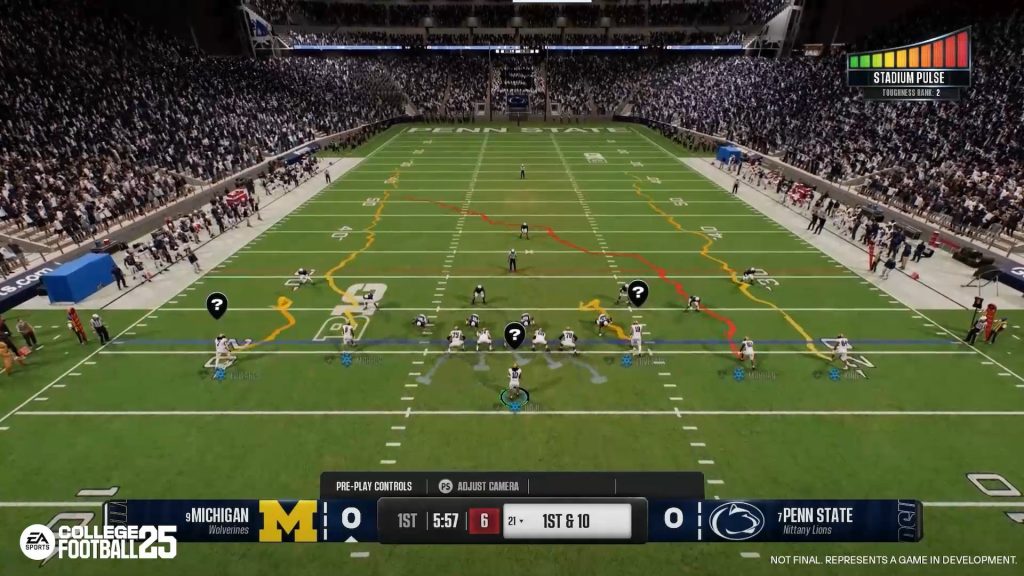
The NCAA Football series got more and more sterile as time went on, and a lot of that can be directed at its abandonment of Stadium Pulse. Well, thankfully EA Sports College Football 25 brings Stadium Pulse back with shaking stadiums and a truly boisterous crowd curtailing visiting teams. You can even encourage the crowd to get louder by flicking the right stick, further rattling your road-going opponents. Stadium Pulse ties nicely into the new Composure system, which makes players with low confidence and composure fumble the ball more when the stadium gets to a fever pitch. To further enhance the atmosphere of a team’s home-field advantage, there will be little disruptions that occur when the Stadium Pulse meter hits a high; cool details like squiggly lines obscuring the play art and that awesome screen shake and vibration from way back in NCAA Football 06 amplify the feeling of Home-Field Advantage.
Runout Routines, School Mascots, and Fight Songs Are More Authentic Than Ever
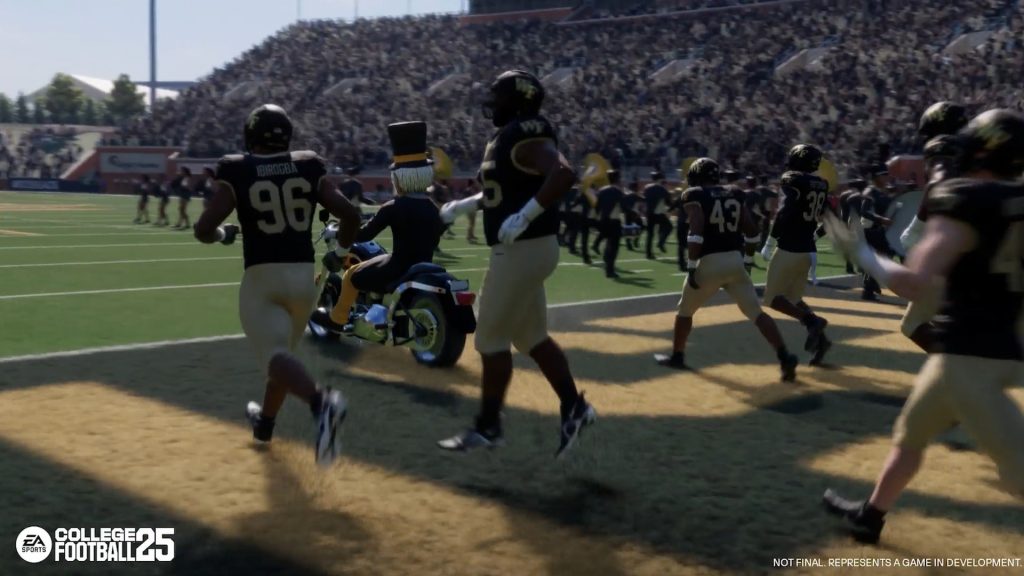
Extensive motion capture was used to recreate the authenticity of a particular school’s stadium, mascots, and game day runout tradition. EA physically scanned individual props to capture an exact likeness, even going so far as to recreate the Gator head to mo-cap players tapping it on their way to the field. The attention to detail is quite laudable here, but there’s only so much they could’ve done considering the long list of 134 Division 1 teams. As such, EA Sports College Football 25 only features 40 mo-capped team mascots with the others being more generic representations. EA has hinted at adding more official mascots through post-launch updates, but we think they’ll just save the rest for future entries of the game. Thankfully, they nailed the sounds of college game day. All 134 school fight songs are recreated here, in addition to 180 school band songs and 170 crowd chants.
134 Team Playbooks With Over 1,500 New Plays
Every Division 1 team’s strategy is reflected with their own playbook in EA Sports College Football 25. This means that 134 playbooks were made using thousands of plays, 1,500 of those being brand new to this game. You can customize your own playbook, just like in NCAA Football 14 as well, so it’ll be fun browsing through the plethora of other players’ styles.
80 Player Abilities Divided Between Physical and Mental
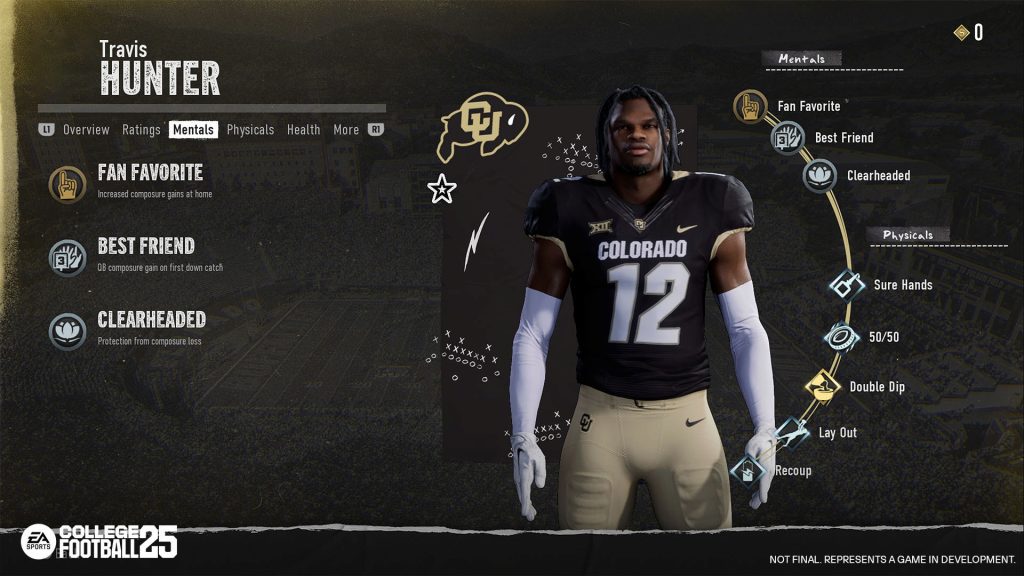
Player Abilities are completely new to the series and add an extra layer of depth. Each player gets assigned 8 abilities that augment certain situational parameters. Abilities can be upgraded through four tiers and are dependent on a player’s specific Archetype. Abilities include negation of Wear and Tear when colliding with a player, and more broken tackles when hitting the player’s maximum speed. EA has taken special care to balance these 80 abilities so none of them break the game or feel too insignificant.
Improved Defensive AI Logic for Read and Pitch Keys
AI sure has come a long way since 2013, and in this case, it’s a good thing. For example, defenses can read more complex situations and react realistically. A specific example that EA used is a defense aggressively playing the dive back as the offense inches closer to a first down. The AI can now bluff plays and give fake tells on offense and defense as well. There’s a more in-depth discussion about read and pitch keys on EA’s gameplay deep dive, suffice to say it’s far more advanced than the AI from 2013.
New Disguised Coverages
Speaking of AI using bluffs, players can now implement sneaky bluffs in the form of disguised coverages. While playing defense, you can disguise your formation with the flick of the right thumbstick. The art of subterfuge even extends to the pre-snap, with the ability to signal false formations to confuse the opposing team. The awesome aspect of this is that players with low Composure can stumble these disguised coverages and end up botching the play altogether.
Pre-Snap Recognition Allows a Lay of the Land Before a Play
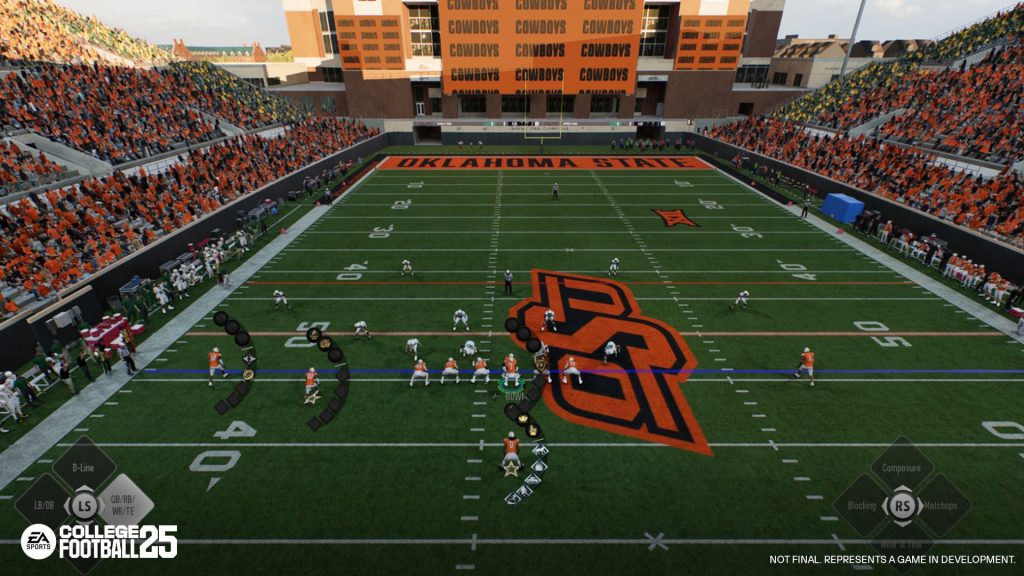
Pre-Snap Recognition is a new overlay that gives key field info like which blitzers are going for the QB. The cool thing about this feature is it ties into the Composure and Stadium Pulse as well as the unique analysis abilities for coaches. Coach Abilities are game-changing, allowing you to see more info per play depending on the ability tier. Coach Vision in general allows a greater overview of the field with tabs dedicated to the Wear and Tear of each player and the real-time Composure of players.
New Coach Archetypes in Dynasty Mode
The developers describe Coach Archetypes as traditional RPG classes. Each of your coaches can either hyper-specialize in one of 11 Archetypes or be a flexible hybrid of multiple. The three base Archetypes are Recruiting, Motivation, and Scheme, with sub-categories branching out from there. Injecting role-playing elements like this Archetype system into Dynasty is sure to add more depth to the already feature-rich mode.
No Heisman Challenge, but the New Champs Gauntlet May Satisfy
That’s right, the fan-favorite Heisman Challenge from NCAA Football 14 didn’t make it for this game, what a shame. But we do have a host of new modes, including something called Champs Gauntlet within Ultimate Team. Ultimate Team includes a host of solo challenges such as head-to-head plays against past Heisman winners. It’s my hunch that Champs Gauntlet is intended to replace Heisman Challenge, though we have yet to get more details on the new mode.
New Road to the College Football Playoff Mode
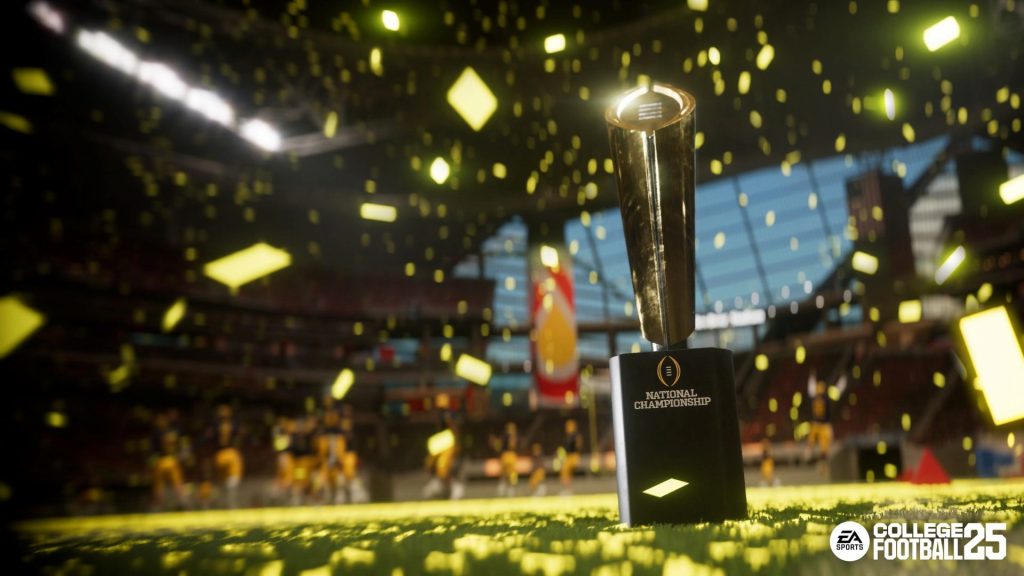
This is your mode of choice if you want a ranked online experience against other players. If you’ve played the ‘Seasons’ mode in the FIFA games, you get the idea. Road to the College Football Playoff has you going head-to-head against others in 10 games resulting in the championship. You can rank faster by picking lower-tiered underdog teams, and winning all 10 games gives you a large bonus as well. The five possible ranks are Bronze, Silver, Gold, Platinum, and Legend. This seems like a mode built with longevity in mind.
Team Builder Is Back, Though More Limited
Team Builder was a way to create and customize a team through an external website back in 2013, and it pretty much works the same in this year’s game. Just like with NCAA Football 14, you can only access Team Builder through the external website. The main difference is that unlike in NCAA Football 14, you can only use your created team in private Dynasty and Play Now modes. Not being able to be the star of a custom-made team in Road to Glory mode is a bummer, so hopefully the larger variety of customization options makes up for its lack of usage in the modes.












